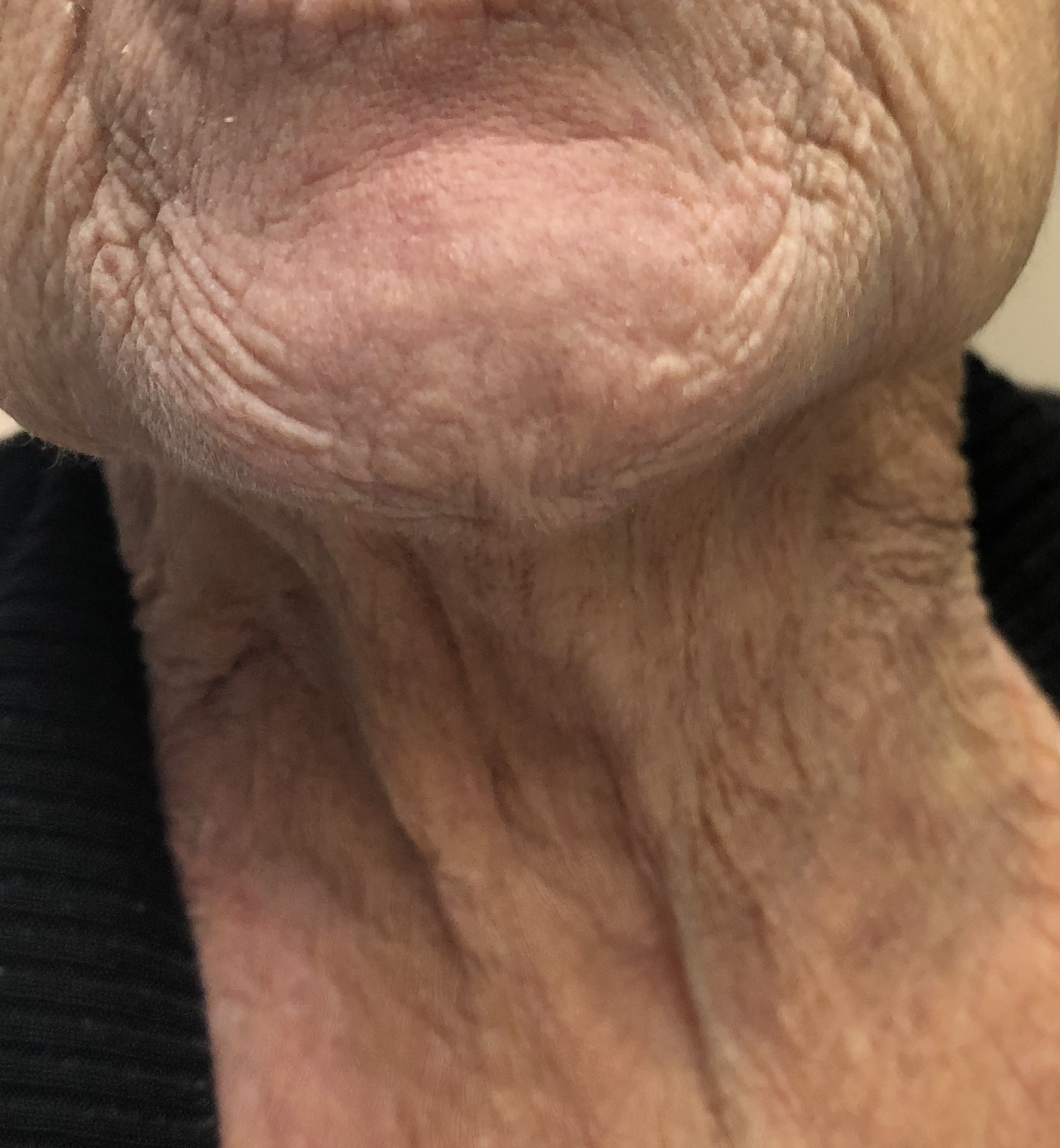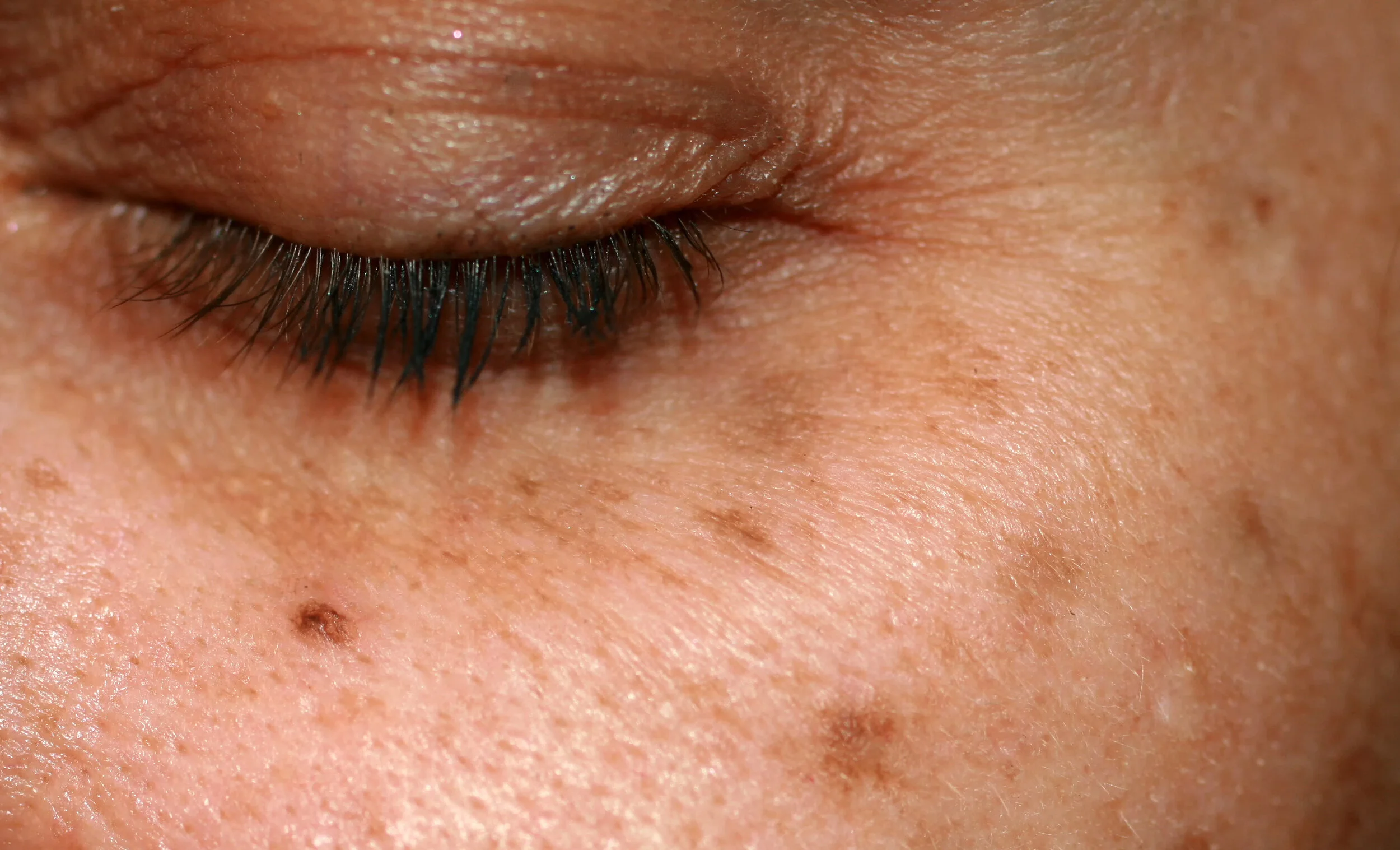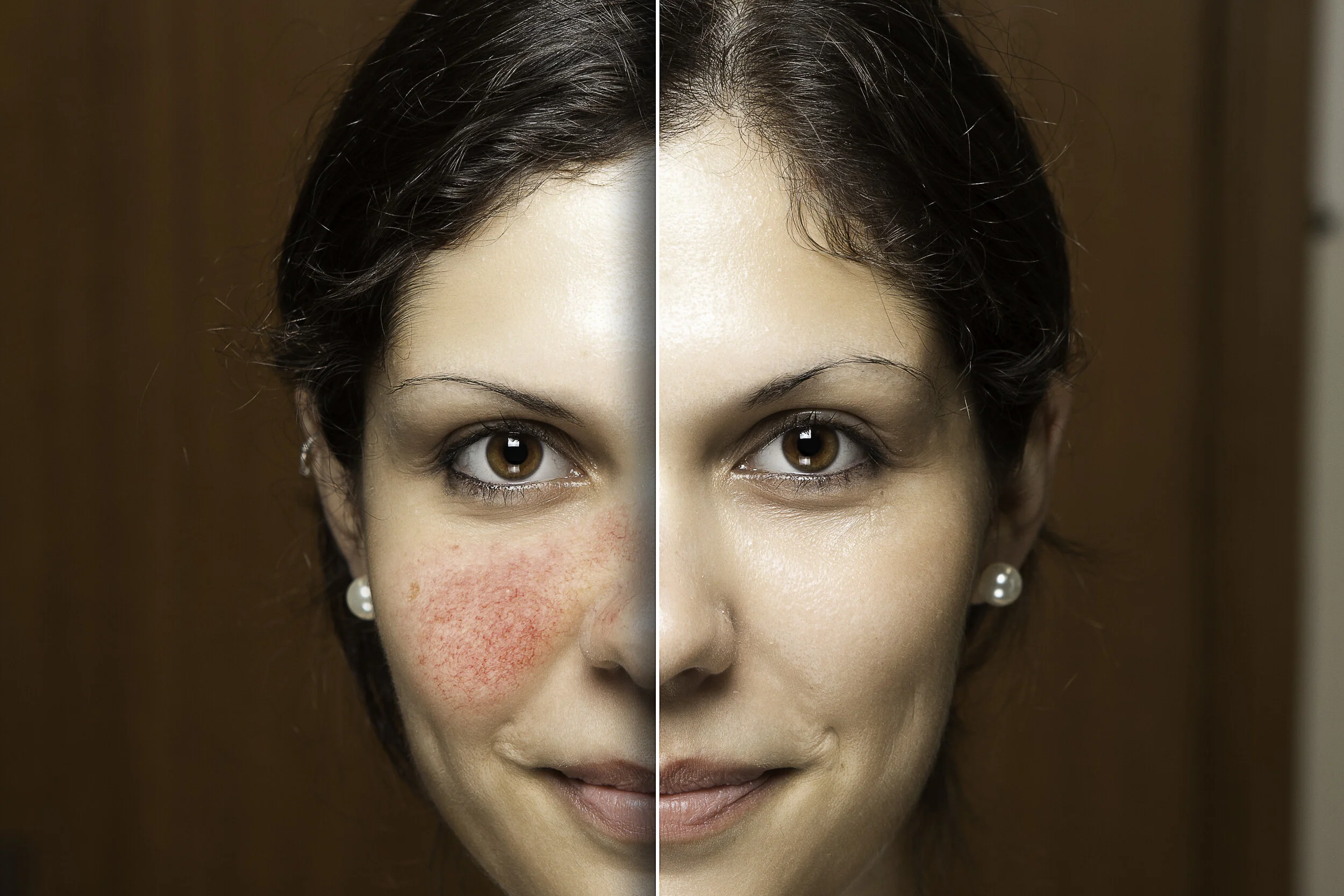Conditions: Skin Problems
wrinkles
Wrinkles are the ubiquitous sign of age, worry, and ill-health. Prevention of early wrinkles is vastly underutilized, but may be accomplished with a few minutes attention per day. Wrinkle progression begins with them appearing only when the muscle under the skin contracts. Over time, a shallow wrinkle will be present even when the muscle is at rest, deepening when the muscle activates. Finally, the wrinkle becomes deep and permanent if untreated.
Crepey skin (skin having the appearance of crepe paper)
Fine ridges and the appearance of excess skin with the resemblance to crepe paper is a condition due to the loss of elasticity of the skin. This results from the loss of a protein called, appropriately, elastin. Ultraviolet exposure is the prime cause for loss of elastin in the population.
pigmentation irregularities
Uneven pigmentation comes in several forms and from several causes. These “dyschromias” include melasma (“mask of pregnancy”), solar lentigos (“age spots” or “liver spots”) freckles, and birthmarks. Increased pigmentation (“hyperpigmentation”) often occurs after inflammation or healing and eventually resolves. Low pigmentation (“hypopigmentation”), however, is usually permanent.
scars
Scars can be unsightly, painful, itchy, or even restrict movement.
Rosacea
Rosacea is a long-term skin condition that typically affects the face. It results in redness, acne, swelling, and small and superficial dilated blood vessels. Often, the nose, cheeks, forehead, and chin are most involved.
blood vessels
Telangiectasias, also known as spider veins, are small dilated blood vessels that can occur near the surface of the skin, and are common on the face, especially around the nose, cheeks, and chin.
Skin cancers
Early detection of skin cancer is truly life saving. A growing bump, a wound or scab that does not heal within a few weeks, or a mole that grows are examples of danger signs that deserve expert evaluation.








